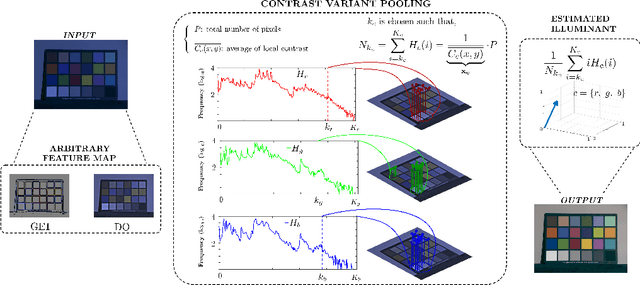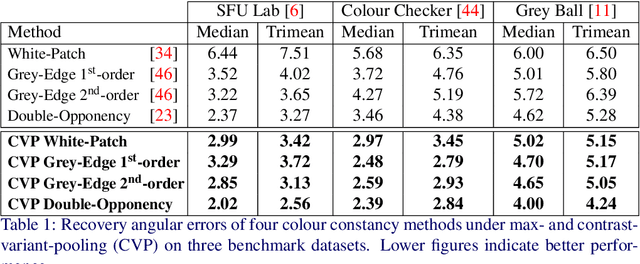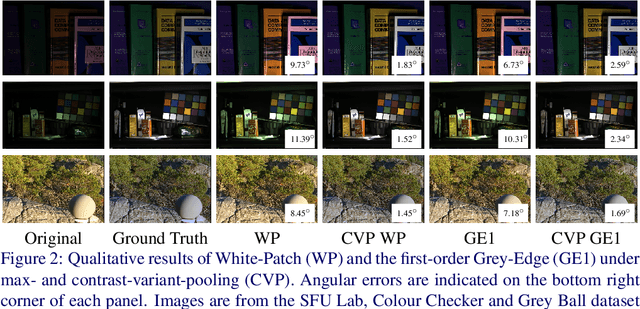Raquel Gil Rodríguez
Colour Constancy: Biologically-inspired Contrast Variant Pooling Mechanism
Nov 29, 2017



Abstract:Pooling is a ubiquitous operation in image processing algorithms that allows for higher-level processes to collect relevant low-level features from a region of interest. Currently, max-pooling is one of the most commonly used operators in the computational literature. However, it can lack robustness to outliers due to the fact that it relies merely on the peak of a function. Pooling mechanisms are also present in the primate visual cortex where neurons of higher cortical areas pool signals from lower ones. The receptive fields of these neurons have been shown to vary according to the contrast by aggregating signals over a larger region in the presence of low contrast stimuli. We hypothesise that this contrast-variant-pooling mechanism can address some of the shortcomings of max-pooling. We modelled this contrast variation through a histogram clipping in which the percentage of pooled signal is inversely proportional to the local contrast of an image. We tested our hypothesis by applying it to the phenomenon of colour constancy where a number of popular algorithms utilise a max-pooling step (e.g. White-Patch, Grey-Edge and Double-Opponency). For each of these methods, we investigated the consequences of replacing their original max-pooling by the proposed contrast-variant-pooling. Our experiments on three colour constancy benchmark datasets suggest that previous results can significantly improve by adopting a contrast-variant-pooling mechanism.
 Add to Chrome
Add to Chrome Add to Firefox
Add to Firefox Add to Edge
Add to Edge